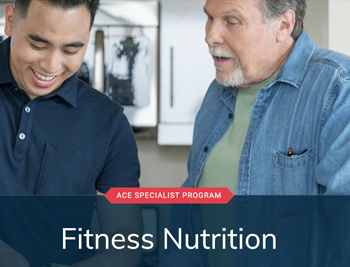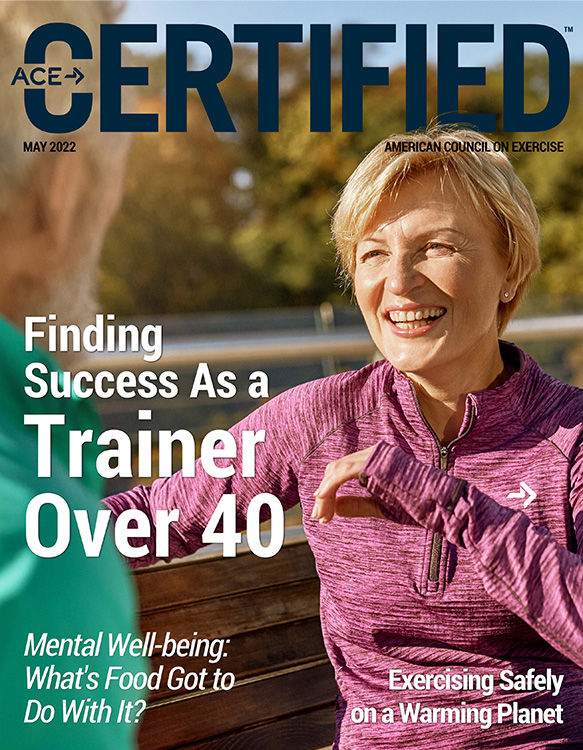
There is a two-way relationship between food and stress. The food we eat can influence mental health and well-being, while our mental health or stress can influence what we choose to eat.
Epidemiological data indicates that what we eat may impact mood and mental well-being, while nutrition can help to improve mental health outcomes. Multiple meta-analyses of long-term cohort studies suggest that those who follow a healthy diet, which is defined as including fruits, vegetables, whole grains and fish, are at a reduced risk for depression.
Increasingly, researchers are examining the gut-brain connection in relation to mood due to the production of neurochemicals in the gut. In a 2019 paper, Adan and colleagues argue that current studies are largely observational rather than showing direct cause and effect. However, they have identified nutrients crucial for brain health as well as gut health, hormones and neurotransmitters, all of which impact mood and mental health. These include fatty acids, protein, fiber, and B and D vitamins.
These researchers also note that while many factors related to mental health exist, including genetic and environmental, “increasing evidence indicates a strong association between a poor diet and the exacerbation of mood disorders, including anxiety and depression, as well as other neuropsychiatric conditions.”
Of course, while improving nutrition habits can support mental health, if your client is experiencing sudden mood changes or is having difficulty with daily tasks, encourage them to seek the support of a medical or mental health professional.
This chart presents nutrients and corresponding foods that have been shown to be beneficial for brain health and mental well-being.

Coaching Clients Who Feel Stressed to Better Nutrition
The relationship between mental well-being and nutrition is a two-way street, as stress can influence nutrition habits just as nutritional intake can influence stress. When stress is high, people may reach for more processed foods or fast food in an effort to save time. Some may use stress eating to try to manage emotions. Stress may also impact cravings.
When Stress Leads to Appetite Loss
Not everyone responds to stress by overeating. In fact, increased stress causes some people to completely lose their appetite. If you have a client who responds to stress like this, here are a few strategies you can offer to help them consume adequate nutrition even when they don’t feel like eating. (Note: If a client suddenly has a very low appetite for an unknown reason, they should discuss this with a health professional.)
- Soups, smoothies and protein shakes that include protein, fruits and vegetables can be great options for packing in extra nutrition in an easily consumable form. Insulated cups make it possible for the client to sip the soup or smoothie as slowly as desired while keeping the temperature controlled.
- Incorporate healthy fats, which are both calorically and nutritionally dense. Foods like nuts, seeds and avocados can provide calories and nutrients in a small portion.
- Go for smaller, more frequent meals. If eating bigger meals is a challenge, stick with smaller meals and snacks throughout the day.
- Focus on palatable foods. Foods like pudding, oatmeal, scrambled eggs, or peanut butter and jelly may be palatable and can also provide nutrition.
For a significant number of people, the past few years have led to an increase in stress. As a result, the generic goals of “lose weight” or “gain muscle” may not be what many are aiming for right now. Rather, feeling better, having more energy or being able to better handle stress may be at the top of many people’s list of goals. As a health and exercise professional, you can help your clients to do just that. Better nutrition, combined with lifestyle habits such as improved sleep and increasing physical activity, can go a long way toward reducing stress and enhancing mental well-being.
Here are three approaches you can use to support your clients (feeling stressed out or not) to eat more nutrient-dense foods:
Make the healthy choice the easy choice. Discuss ways to improve access to healthy foods and help clients build an environment that can set them up for success. Encourage them to prioritize meals that are high in both protein and fiber, which helps to provide energy and nutrients and increase satiety.
Offer clients the following strategies to help create and support a healthy home environment:
- Clients who are time-pressed may opt to utilize grocery delivery, pre-chopped or portioned food items, or even healthy take-out or delivery services.
- Reducing the number of highly processed foods and sugary drinks in the home environment makes it easier to make healthy choices.
- Stock the kitchen with simple, quick and nutrient-dense foods that require little-to-no prep such as eggs, egg whites, protein shakes or bars, oats, frozen fruit, bagged salad, rotisserie chicken, pasta and chicken sausage.
Address stress eating. Clients feeling stressed-out may be experiencing some type of stress eating. Working from home, combined with the ease of food delivery, has made this habit even easier. If your client is experiencing frequent stress eating (defined as eating due to an emotion rather than hunger), utilize the hunger scale to discuss hunger and fullness cues. (Note: Using the Bonus Tool button at the top of the page, ACE Certified Professionals can access and download a helpful tool called the Perceived Stress Scale that can be used to help clients identify stress and anxiety.)

Offer clients the following strategies that can help with stress eating:
- Encourage clients to keep a food journal or make a note of certain emotions or “triggers,” which can help them anticipate and plan what to do when they feel an urge to stress eat.
- Creating a “pause” between the emotion and the food can help a client make a mindful choice about whether to eat a certain food. When a client experiences a craving or “urge” to eat something because they are feeling stressed, suggest they set a timer for 10 to 20 minutes to acknowledge the stress without using food to cope.
- Slowing down and committing to sitting at the table (as opposed to standing at the kitchen counter) and turning off screens while eating can make it easier to eat mindfully and listen to fullness cues.
- It may be tempting to make a “rule” against certain trigger foods, but this can backfire. Rather than cutting out foods, plan to incorporate a favorite food (like having ice cream on Saturday night) to help foster a healthy relationship with food and prevent binges.
- Together with your client, brainstorm some healthy ways they can manage their stress in the moment. Examples include listening to a favorite song, taking a walk or going outside, stretching, calling a friend, doing a short workout, texting their health coach, journaling, taking a few moments of alone time or meditating. Discuss these strategies with your client and help them create a “toolbox” of strategies they can use when stress levels start to rise.
Plan ahead. Meal planning or food prepping ahead of time can make it easier to make healthy choices.
Here are some strategies for planning ahead to offer your clients:
- For some people, having set meal and snack times can help prevent between-meal hunger.
- Consider utilizing one of your coaching sessions to help your client create grocery lists, identify meal “staples” and plan out simple foods to have on hand to make healthy meals easier.
- Planning ahead can also apply to dining out. There may be times where a client wants to enjoy an indulgent meal, or they are in a setting where they have less control over food choice (like a dinner party or a catered event). Remind them to use strategies such as taking the time to savor the food and using fullness cues, which can help them avoid overeating.
- If a client eats out multiple times per week, it may be helpful to discuss how to make a healthful choice at their favorite restaurants. Opting for a lean protein (chicken or fish), choosing a vegetable side dish or salad, and skipping breaded or fried foods are healthy choices when eating in a restaurant.
At the end of the day, the client is the expert on their own life, and they are more likely to try out ideas they come up with. The following open-ended questions can help your clients identify solutions that work for their unique needs and situation:
- What would make it easier to eat healthier?
- What types of fruits and vegetables do you enjoy?
- What does eating healthy mean to you?
- What would help you to stress eat less frequently? Are there certain times of day when you tend to stress eat the most? What else could you do to help your stress while in a difficult moment?
- What would happen if you made no changes to your nutrition? What would you like the outcome to be instead? What do you think it will take to get there?
- What obstacles do you see that could get in the way of going to bed earlier?
- How rested do you feel in the morning? Are you open to going to bed earlier? How much sleep do you need to feel rested? What bedtime would that require?
- What type of physical activity do you enjoy most? How often would you be able to do it?
In addition to improving nutrition habits, sleep, physical activity and screen time can all play a role in mental well-being. Getting enough sleep can help to reduce food cravings, which can sometimes occur due to an energy slump or lack of sleep. Conversely, identifying and incorporating enjoyable exercise can help to increase physical activity and improve sleep quality, while also providing a healthy way to relieve stress. Having a bedtime routine and reducing the use of screens before bed can be helpful in getting good quality rest.
It is worth noting that screen time (and specifically scrolling social media or news) can make falling asleep more challenging. A 2020 study on people ages 16 to 25 years revealed that frequent social media was a risk factor for poor sleep and worsened mental health. If a client struggles with screen-time usage and is open to setting boundaries, collaborate to set a goal directed at reducing screen time.
Healthy habits like improving nutrition, physical activity and sleep can support mental health and wellbeing. Coaching in a health-promoting way can provide long-term results and support a healthy relationship with food and exercise.
Expand Your Knowledge
 |
As an ACE Fitness Nutrition Specialist, you will be armed with essential behavior change strategies paired with science-backed nutrition information to help your clients become more knowledgeable about their nutrition and develop life-long dietary habits that lead to better health.
|
 |
Learn effective and essential behaviors that help clients achieve and maintain a healthy weight, along with WHY those behaviors work and HOW to coach them. You’ll learn how to apply a “goals-skills-practices-actions” framework, prioritize what to work on first, and what to do when encountering obstacles in the process.
|
 |
This course teaches you how to equip your clients with the skills they need to feel confident and be self-reliant when making healthy food choices, whether at home or on-the-go. With this video training, you will learn how to coach clients to improve their nutrition and help them create lasting behavioral changes so they can make lifelong, healthful decisions.
|





 by
by 







